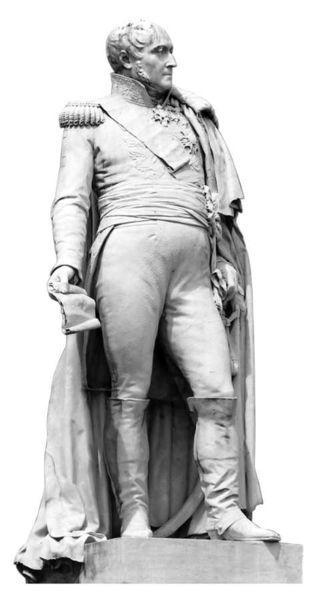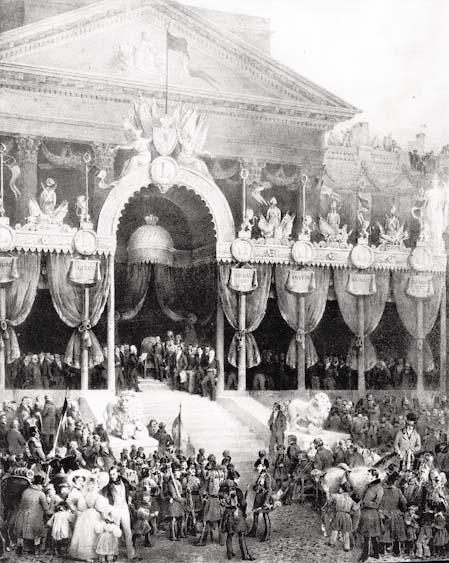

The new nation established a democratic constitution (which was very progressive for its time) and a Parliament. It then had to find a new monarch. French was chosen as the official language even though the majority of the people spoke Flemish. This choice would be the source of quite a few difficulties for many decades to come.
General Belliard, whose statue was placed (in 1838) at the top of the stairs of the Passage de la Bibliothèque very close to the Pensionnat, also played an important part after the Revolution. Charlotte and Emily would of course have seen this statue. Belliard, a French officer, ambassador and diplomat, was to secure the fragile new nation against further attempts by William I to reconquer Belgium. He also travelled to Calais to welcome Leopold of Saxe-Coburg, who had travelled from Dover on 16 th July 1831, as the new King of Belgium.
Belgium was to remain a monarchy, but the House of Orange was excluded for ever. A monarch had to be found who was acceptable to the Belgians and approved by the Powers (France, Great Britain, Austria, Russia and Prussia). Leopold of Saxe-Coburg, who was related to the British royal family, was invited by the British to become the first King of the Belgians (1831-1865). His coronation was on 21 July 1831, today the Belgian national holiday.
Read more about Leopold I
The young nation now had a brilliant prospect before it. Belgium had become a model liberal constitutional state for its time. King Leopold was to prove to be a good choice. He provided harmony and knew how to compromise between the Liberals and Catholics, securing a stable country with a thriving economy. Belgium was in fact the first continental European country to undergo the Industrial Revolution. Under the king’s reign, it became the second most important industrial power in Europe.
Belgium went on to build the first railway in continental Europe in 1835, between Brussels and Mechelen. The first trains were drawn by Stephenson engines imported from Great Britain. By 1843 the country had a railway network, and it developed an excellent transport infrastructure of ports, canals, railways, and highways to integrate its industry with that of its neighbours.
Throughout the 19th century it was a major steel producer. Large coal deposits helped to fuel industrialization.
It was a modern state in terms of its political constitution, administration and economy. Belgian banks served as models for those in other countries and its tax system was ideal for businesses and newcomers, since it was a cheap country to live in and to produce goods.
Shortly after 1830, there was a great influx of foreigners, including many British. Dr Thomas Wheelwright, whose daughters attended the Pensionnat Heger, was one example: an Englishman who, when he lost his fortune, went to live in Brussels because it was cheaper. The Brontës’ choice of Brussels was partly influenced by the low cost of travelling there and of boarding at the Pensionnat.